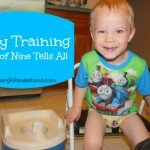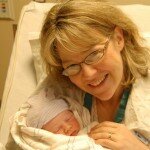Persevering in Homeschooling
By Contributing Writer, Carmon Friedrich
25 years. We are coming up on that many years of homeschooling our children. Almost a quarter century! That’s not long enough to consider ourselves pioneers in this endeavor, but it does mean we have “seen it all” minus the persecution of the brave folks who forged a path that we were grateful to follow.
One of the things we have seen in that time is some families who started well, but who bailed out along the way. By starting well, I mean that they had strong biblical convictions for homeschooling, based on Deuteronomy 6:6-9:
And these words that I command you today shall be on your heart. You shall teach them diligently to your children, and shall talk of them when you sit in your house, and when you walk by the way, and when you lie down, and when you rise. You shall bind them as a sign on your hand, and they shall be as frontlets between your eyes. You shall write them on the doorposts of your house and on your gates.
and Ephesians 6:4:
Fathers, do not provoke your children to anger, but bring them up in the discipline and instruction of the Lord.
as well as many other reminders to fathers and mothers that they are to teach God’s word diligently to their children (e.g. Gen. 18:19, Deut. 4:9, Deut. 11:19, Ps. 78:4, Prov. 4:4, Prov. 22:6, II Tim. 3:15).
Their convictions were based on the idea that homeschooling was not primarily about academics, but that it was about obedience to God’s command to speak to the hearts of their children that they would, Lord willing, grow to love the Lord their God with all their heart, soul, mind, and strength.
There are many and occasionally complex reasons why people give up on homeschooling. I cannot address them all here, and they do include real adversity at times, such as marital problems, rebellion of children, and financial difficulties. But the reasons that I wish to address here, that parents sometimes give for bailing out of homeschooling, involve mommy burnout and worries about academic achievement.
We had been homeschooling for about six years when I had our sixth child. People have asked me at what point I felt I was overwhelmed in my childbearing years, and I would say that this was the tipping point. Up to that time, we, like so many families who were teaching their own children, had already sampled a wide variety of methods for homeschooling. We had started with Ann Ward’s Learning at Home preschool program, then used Calvert School for kindergarten. For awhile in grade school we did unit studies and Miquon Math. Then we spent some time with ATIA, but our unconventional and reforming family did not do well with the structured program and the lack of theological cohesiveness in the “Wisdom Books.”
Factor in the fact that for most of our educational journey, I had been either pregnant or nursing a baby. Just living is busy. Living and “school” can be crazy.
Steve read an article in Practical Homeschooling which changed our direction. It was by Dr. Arthur Robinson, a widower with six children, and it was called “My Children Teach Themselves.” As soon as he finished the article, Steve said, “This is what we are doing.”
A couple of months before, I was on a trip with our children, visiting my family in Oregon, while Steve stayed home to work. On the way back from a day at the beach, we were in a very serious accident in our van, along with my sister and her children, because a wheel came off our vehicle due to some incompetency on the part of the car dealership where we had purchased it. The following months were no day at the beach.
We really needed to find a way to continue homeschooling our children without the stress of teaching a dozen different subjects to each school-aged child. Unit studies had helped to integrate different grade levels, but they also required a lot of work and planning on my part to make it happen. Dr. Robinson was proposing a way to help my children teach themselves while concentrating on just three subjects: readin’, writin’, and ‘rithmatic. It sounded too good to be true.
This novel idea was very appealing, but we had lots of questions. Somehow Steve found Dr. Robinson’s phone number and called him up. We had to go to Oregon to settle some details related to the car accident, and we arranged to visit him in southern Oregon on our way home. We followed the directions to his rural home (which is even more in the boondocks than ours) and spent the next hour in the Robinsons’ family schoolroom, peppering Dr. Robinson with questions.
He was very gracious, but his towering intellect made us (well, at least me) a little nervous. This man was buddies with Nobel Prize-winning scientists who came to visit his family from time to time. It was reassuring, however, to see the chalkboard where his wife had written Proverbs 3:5-6 before she died: “Trust in the Lord with all thine heart, and lean not unto thine own understanding; in all thy ways acknowledge him, and He shall direct thy paths.” They had not erased the message since Lorelee’s death over four years before. He showed us the textbooks his wife had ordered to educate their children through all twelve grades. When she died, he could not continue working and keep his children home for school, as well.
We went home determined to give this new and different idea a try. So we did it. And we still are doing it. We are using the philosophy of self-teaching that we learned from Dr. Robinson, but like any good homeschooling family, we have adapted it to suit our family. (My husband later wrote a Macintosh version for the Robinson Curriculum and the Henty books the Robinsons have made available on CD. They also printed hard copies of all the Hentys.) We have been guests several times in the Robinsons’ home, and we no longer (well, at least me) feel nervous in Dr. Robinson’s presence. I still don’t feel comfortable calling him Art.
This is what we do for school:
Unlike Dr. Robinson’s ideas about self-teaching extending to Biblical training, we believe that it is important to rigorously teach God’s law to our children all the time (thus the verses I mentioned at the beginning of this post). We have our older (reading) children read from one to three chapters each morning in their Bibles. They are learning the Westminster Catechism, as well. An online friend has written extensively about having a “Morning Time”, an idea I have also tweaked to fit our needs. We don’t always accomplish it, but it can be the BEST time of our day as we take many rabbit trails and have some of our most lively discussions. One resource we use during this time is George Grant and Greg Wilbur’s The Christian Almanac, reading the entries for the day, a “this day in history” kind of book which sparks lots of conversation.
After their personal Bible time, the children do their math. Before they are allowed to crack open a math book, they must know all their math facts. We have flash cards through twelves for addition, subtraction, multiplication, and division. When they are ready, about age five or six, we begin at the very beginning, with addition (of course, we have given them help learning to count, write and recognize numbers), letting them drill themselves with the flash cards. Usually they do this alone, sometimes with my guidance. Once they master one operation, they are allowed to move to the next, occasionally reviewing what they already learned and doing some worksheets from the Saxon Math homeschool packet.
When all math facts are mastered, our children slowly begin Saxon 54. Some people don’t like these math books, saying they are too boring, but I think that they are perfect for self-teaching as they carefully explain each new concept, give opportunity for practicing it, and constantly review the previous concepts. The goal for my children is to be able to work alone for two hours on their math. There is not an age at which they are ready for this; each child is different. I do not allow them to check their own math, like the Robinsons, until they are older, but they are to (ideally) bring each lesson to me as it is completed, then they must correct their mistakes before beginning a new lesson.
Next is writing. Dr. Robinson’s article says he has his children write an essay each day. We do it a little differently. For the youngest children, the Charlotte Mason idea of narrating stories from the imagination or that they have heard is a good way to get children to think about writing down their ideas. I have also used resources like English For The Thoughtful Child and Learning Language Arts Through Literature to help younger children get started with understanding the basics of sentence construction and grammar. I also write down ideas for short reports for the younger children, and more complex essays for the older. I just brainstorm by looking at writing books, considering what books they have been reading, and using a little free association. I print out a list of ideas for each child to keep in their notebook. Sometimes their papers are very short and quick, sometimes they involve a lot of research and take much longer to write.
I correct their papers with the writer by my side. I don’t pick on every mistake. For the youngest children, I may only focus on one concept, such as when to capitalize letters. For the older children, I am a lot more picky. There are good resources to help you know the basics of grammar and punctuation. I do not teach grammar or spelling as separate subjects.
Finally, we have reading. This is the subject which is the easiest and most enjoyable for everyone. The Robinson Curriculum has many fine books scanned onto CDs, and it is certainly worth the price, but we have such an extensive library I mostly use my own books for my children to read. Every few months, I go to the shelves and create a personalized reading list for each child. I type it up and print it out for their notebooks. This is where they get their history, science, and literature. You can use some of the ideas from classical education or Charlotte Mason (Ambleside Online is a great resource for book ideas) as you design your reading lists. These curricula are also book-centered, so their ideas mesh well with this form of self-teaching.
I have the younger children read for an hour, the older for an hour and a half. My children keep lists of all the books they have read. They sometimes write a review or report on the books they complete as part of their writing time. Of course, we use phonics to teach the basics of reading. I have taught all ten of our children how to read, and they are all book nuts like their mom. I no longer use a phonics program…I just use Bob Books and work my way through them, then get out the easy readers and work through them until the children are reading well.
Our pastor has taught some of our teens (and their mom) biblical Greek, and we are hoping to start up again soon. It was a good reinforcement for English grammar and deepened our love for God’s Word.
So what are the drawbacks to this method of homeschooling? I don’t think our children are as self-directed as Dr. Robinson’s children. They still need a lot of oversight to keep them working, but I don’t need to make complicated lesson plans anymore. I sometimes get behind on math corrections, and some of the children seem to take forever to complete a paper. But as I look back I can see tremendous progress for all of them. Our oldest son scored 1520 out of 1600 on the SAT, including a perfect score on the verbal section. We have graduated six of our ten children (including the one who was the “tipping point”!), and we are committed to finishing what we began, with our convictions unchanged, but only deepened as we continue this journey and continue to trust God to work in the lives of our children through and in spite of our mistakes and our weakness.
Our children do not need someone to tell them how to learn whatever they need to know. Many homeschooling mothers agonize over possibly missing something when imparting knowledge to their children. There will always be “holes,” even if you are a slave to a Scope and Sequence. But if you can teach your children to teach themselves, they will be well-equipped to tackle anything they want or need to learn.
Tags: home schooling























Carmon, this was tremendously helpful to me. I’ve been rethinking everything this past year as I have added more children to the mix…and am also still in the thick of babies and nursing. I found a site recently that had me exploring the Robinson curriculum and the ideas behind it…and now this article really confirms some of what I believe God is teaching me. I’m so encouraged! Thank you for taking the time to share with the rest of us what you have learned over the course of many years. I do the writing like you do…but use the Institute for Excellence in Writing to help with the structure/mechanics of the process. For those who do not have a writing “bent”…I recommend that program. It will enable anyone to teach writing in the context of ANY curriculum you are using for history/reading/etc.
Thanks for such an insightful post! Experience is key when it comes to home education. So when others can hear how veterans have done it, they are inspired to develop their own style for teaching and learning. We’re in our 22nd year and still adjusting as necessary. Thanks for sharing.
Thanks so much for this encouragement, Carmon! It reminds me of a quote I heard a while back about homeschool families…”We are not filling buckets, we are lighting a fire!’
Carmon, This was extremely helpful to me! So thankful that you share your wisdom and experieinces with us.
I just came across this through some other web site…I do go down many rabbit holes myself! This is very encouraging to me today especially. We are brand new to homeschool this year and have pulled three of our kids out of PS. One is going away to college and one other is only 1 year old. We may be having a 6th, the Lord willing. I’ve been scared to have another though and also homeschool. Our teen is a very reluctant homeschool girl and is fighting it all the way, throwing arguments all over the place. Your article has helped me to RELAX! Thank you